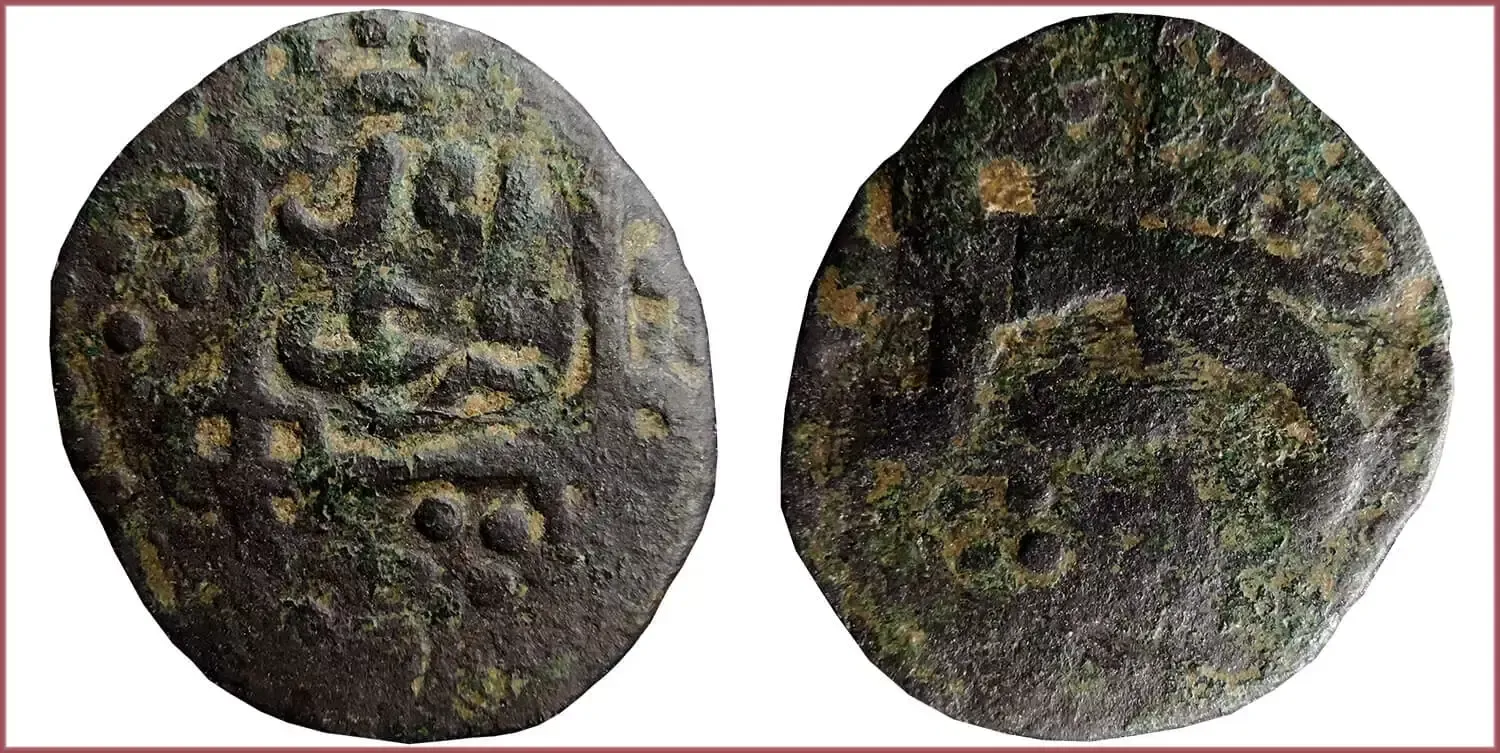PŪL: COIN OF GOLDEN HORDE
Pūl, 1379-1396: Golden Horde
ND (no date): approximate dating.
Ruler: Tokhtamysh (not Tokhta/Toqta) — Khan of the Golden Horde during 1379-1396, who briefly succeeded in consolidating the Blue and White Hordes into a single polity.
Inscriptions inside a square decorated with ornaments.
Bars (leopard) walking left.
On the obverse and reverse of the coin there are several symbolic 3 dots (the meaning of the symbol is unknown).
Qrim Mint (or Solkhat: nowadays — Staryi Krym, Ukraine).
- Copper: 17 mm - 1.16 g
- Reference price: 3$
COIN PŪL — WHERE & WHEN (coins catalog: by names & emitents)
- GOLDEN HORDE (13th-15th centuries): pūl = 1/48 yarmaq; later — pūl = 1/16 dang
- CENTRAL ASIA (DZUNGAR KHANATE, KHANATE OF KOKAND...; 17th-19th centuries): pūl
PŪL as coin name.
Next to the Afghan coin of the 20th century pul, its historical prototype — the pūl denomination — is also widely known in numismatics.
First of all, the copper pūl is the smallest coin of the Golden Horde, which became extremely widespread in the lands of Eurasia. Thus, during the 13th-15th centuries, various administrative and territorial units of the Golden Horde issued their pūls. These were small copper coins with the images of a wide variety of animals, birds or even horsemen — although one of the dominant religions in the state was Islam, according to the canons of which it was forbidden to depict living creatures.
Later, pūl began to be issued in the lands of modern Russia, transforming into a new denomination — pulo.
Also known to numismatists and historians are the pūls of the state formations of Central Asia — Dzungar Khanate, Emirate of Bukhara, Khanate of Khiva, Khanate of Kokand, Bekdom of Shahrisabz... Some catalogs, however, call these coins falus or even fals.
Regarding the origin of the name pūl... It is already traditional for coins with a respectable history, the opinions of experts differ, since the deeper one dives into ancient times, the less facts, and more assumptions. So, in this case, the version about the Roman origin of the name is often cited. Considering the Mongolian roots of pūl, I consider this version to be incorrect.
Wikipedia, in my opinion, gives a more realistic version of the origin of the coin name pūl: "From Middle Persian "*pōl", Borrowing from Ancient Greek "ὀβολός" (obol)".











